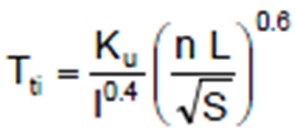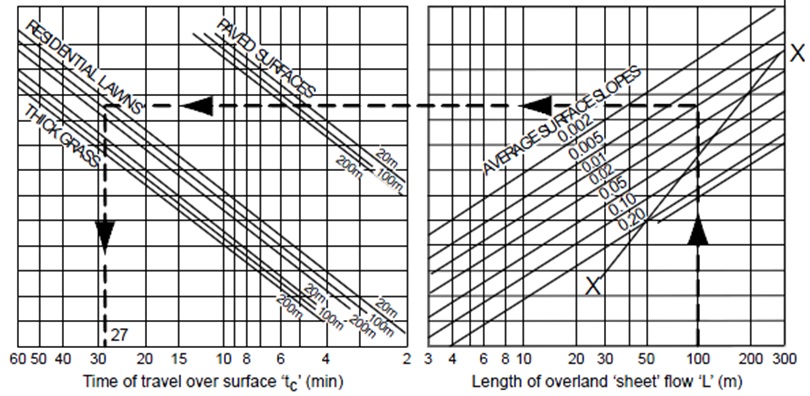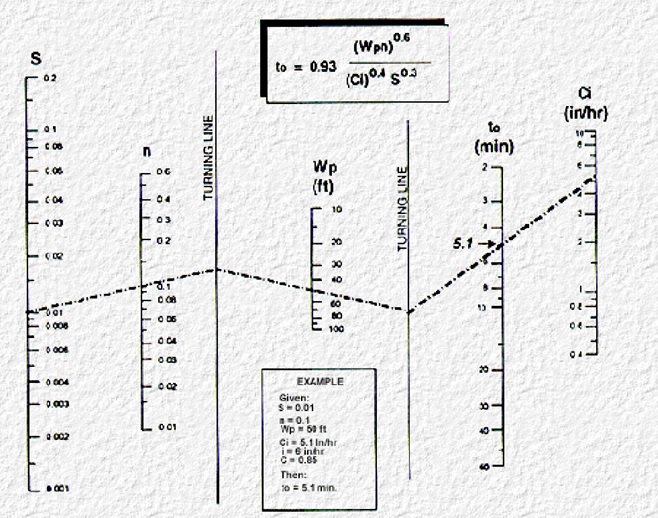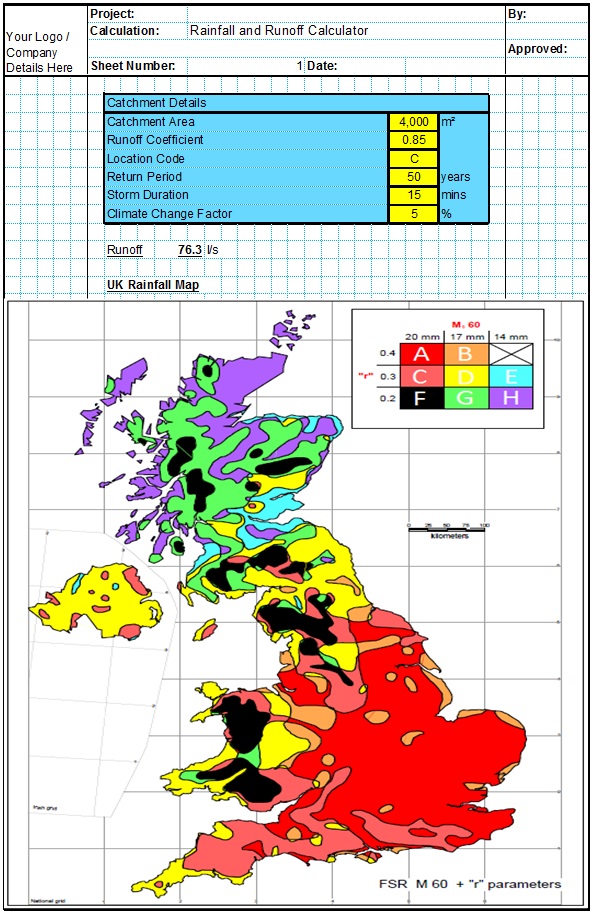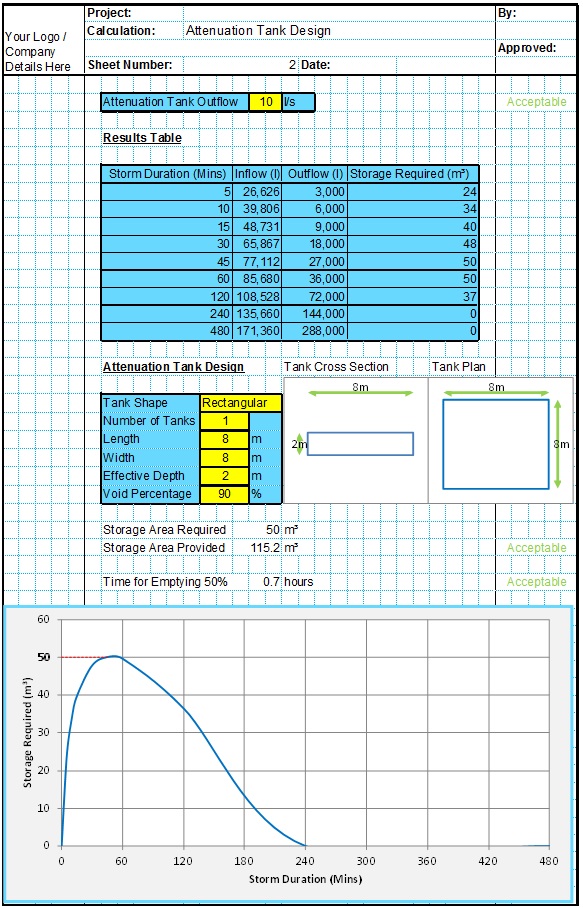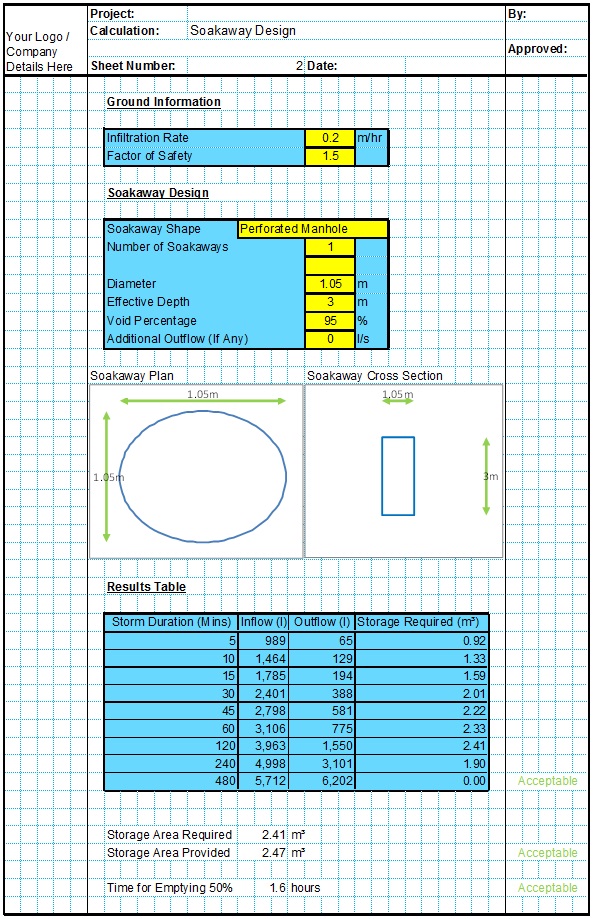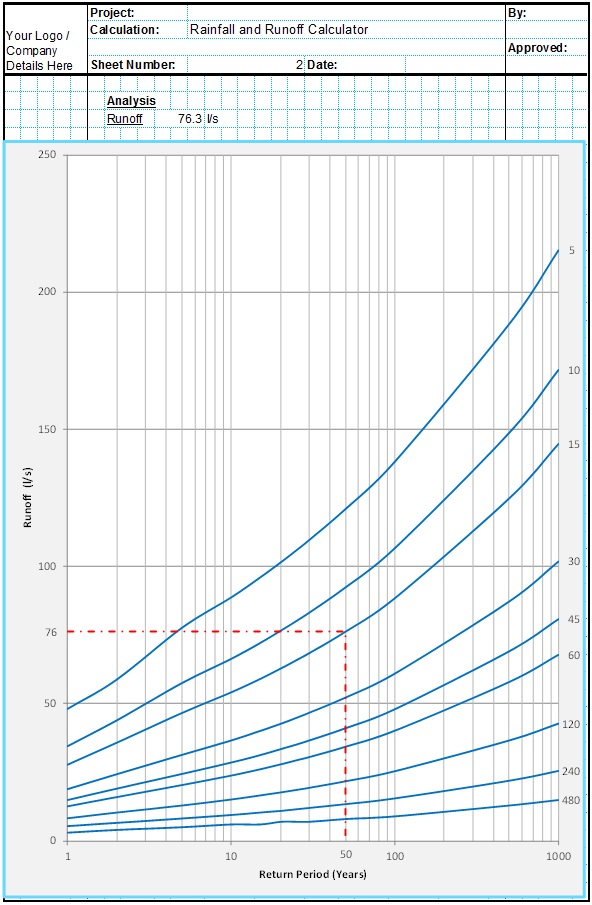When calculating the time of concentration for a catchment, the alternative to using an empirical formula is to calculate the surface runoff flow directly from overland flow formulas. The first part of runoff flow is the overland sheet flow which can be modeled using the kinematic wave equation. The wave formula is generally applicable for the first 100m or so of overland flow on shallow slopes. For steeper slopes or longer flow paths the surface runoff flow should be modeled as shallow concentrated flow or channel flow rather than overland sheet flow.
Kinematic Wave Equation Calculations
Tti = sheet flow travel time (minutes)
n = sheet flow roughness coefficient
L = flow length (m)
I = rainfall intensity (mm/hr)
S = surface slope (m/m)
Ku = empirical coefficient equal to 6.92 in SI units or 0.933 in US units
As the wave formula requires the rainfall intensity, the determination of the time of concentration must be done via an iterative approach. This is because the design rainfall intensity is usually dependent on the time of concentration. Therefore, an estimate must be made of the rainfall intensity to calculate a time of concentration, then this time of concentration must be put used to recalculate the rainfall intensity. This process must usually be repeated several times before an accurate time of concentration value is reached. The CivilWeb Rainfall & Runoff Calculator package includes a spreadsheet which automatically calculates the optimum rainfall intensity value for this formula.
Applications
The kinematic wave theory has been shown to be applicable only for turbulent flow and where the product of rainfall intensity (mm/hr) and flow length (m) is greater than 750. It should also only be used on planes that are fairly homogenous in terms of slope and roughness. For these reasons the kinematic wave model is most suitable for large paved areas such as car parks or airfields, not for heterogeneous rural catchments.
The CivilWeb Rainfall & Runoff Calculator package includes the kinematic wave equation as a method of calculating the time of concentration as it is commonly used for large developed areas where the overland sheet flow is an important component of the time of concentration.
Two commonly used nomographs used to apply the kinematic equations are also included below, one in SI units and one in US units.
TR-55 Alternative Wave Equation
In order to avoid having to solve the wave equation iteratively, an alternative equation has been developed which assumes an IDF curve from the M2-24hr rainfall value.
P2 = 2 year/24hr rainfall depth (mm)
α = unit conversion factor equal to 5.5 in SI units, or 0.42 is US units
This equation should be used with caution due to the simplifying assumptions made regarding the rainfall intensity. It can however provide a good starting point for the iterative solution of the original kinematic wave equation, or as a preliminary estimate of the time of concentration for a catchment where more detailed rainfall intensity information is unavailable.
Related Spreadsheets from CivilWeb;
Runoff Calculator Spreadsheet
This spreadsheet calculates the design runoff flow for a site in accordance with the a number of different methods including the Wallingford Procedure.
Attenuation Design Spreadsheet
This spreadsheet calculates the requirements for a attenuation system and assists the user to design a suitable system.
Soakaway Design Spreadsheet
This spreadsheet calculates the requirements for a soakaway system and assists the user to design a suitable system.
Full Drainage Design Suite
Full drainage design suite (50% Discount) including 7 spreadsheets;
- Colebrook White Pipe Design
- Manning Pipe Design
- Manning Open Channel Design
- Linear Drainage Design
- Runoff Calculator
- Attenuation Design
- Soakaway Design
